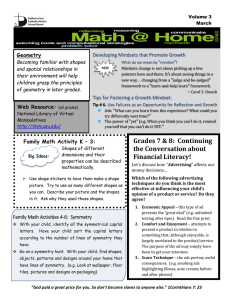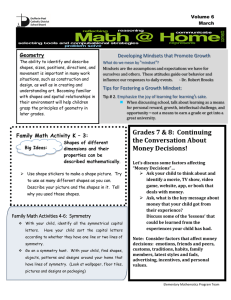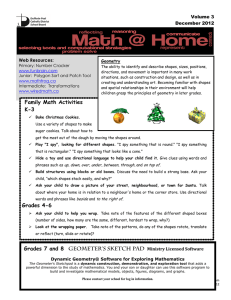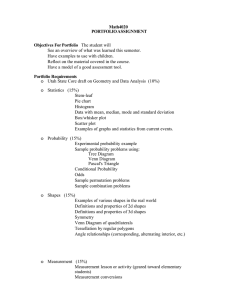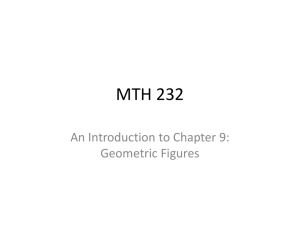Geometry Developing Mindsets that Promote Growth
advertisement
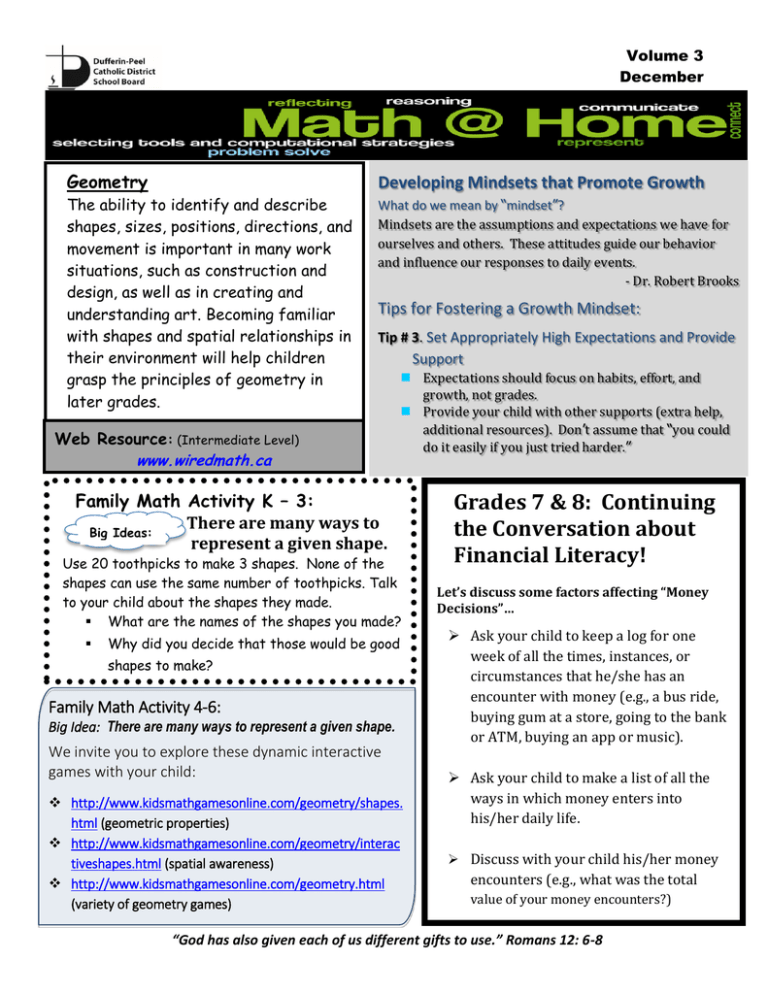
Volume 3 December Geometry Developing Mindsets that Promote Growth The ability to identify and describe shapes, sizes, positions, directions, and movement is important in many work situations, such as construction and design, as well as in creating and understanding art. Becoming familiar with shapes and spatial relationships in their environment will help children grasp the principles of geometry in later grades. What do we mean by “mindset”? Mindsets are the assumptions and expectations we have for ourselves and others. These attitudes guide our behavior and influence our responses to daily events. - Dr. Robert Brooks Tips for Fostering a Growth Mindset: Tip # 3. Set Appropriately High Expectations and Provide Support Web Resource: (Intermediate Level) www.wiredmath.ca Expectations should focus on habits, effort, and growth, not grades. Provide your child with other supports (extra help, additional resources). Don’t assume that “you could do it easily if you just tried harder.” Family Math Activity K – 3: There are many ways to Big Ideas: represent a given shape. Use 20 toothpicks to make 3 shapes. None of the shapes can use the same number of toothpicks. Talk to your child about the shapes they made. What are the names of the shapes you made? Why did you decide that those would be good shapes to make? Family Math Activity 4-6: Big Idea: There are many ways to represent a given shape. We invite you to explore these dynamic interactive games with your child: http://www.kidsmathgamesonline.com/geometry/shapes. html (geometric properties) http://www.kidsmathgamesonline.com/geometry/interac tiveshapes.html (spatial awareness) http://www.kidsmathgamesonline.com/geometry.html (variety of geometry games) Grades 7 & 8: Continuing the Conversation about Financial Literacy! Let’s discuss some factors affecting “Money Decisions”… Ask your child to keep a log for one week of all the times, instances, or circumstances that he/she has an encounter with money (e.g., a bus ride, buying gum at a store, going to the bank or ATM, buying an app or music). Ask your child to make a list of all the ways in which money enters into his/her daily life. Discuss with your child his/her money encounters (e.g., what was the total value of your money encounters?) “God has also given each of us different gifts to use.” Romans 12: 6-8
